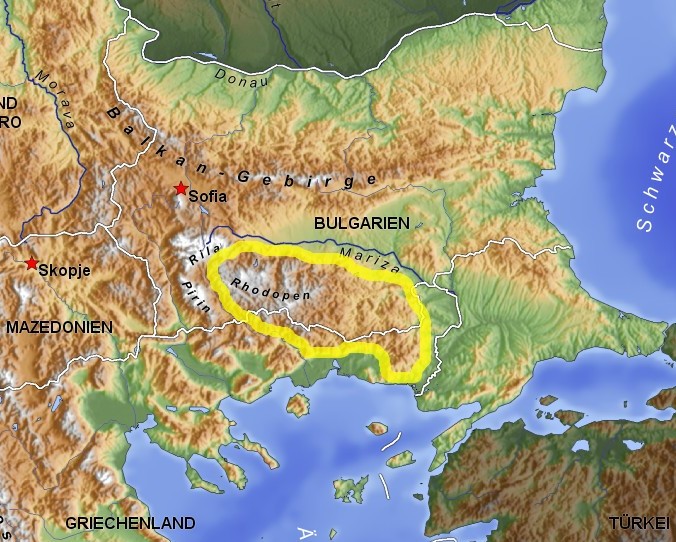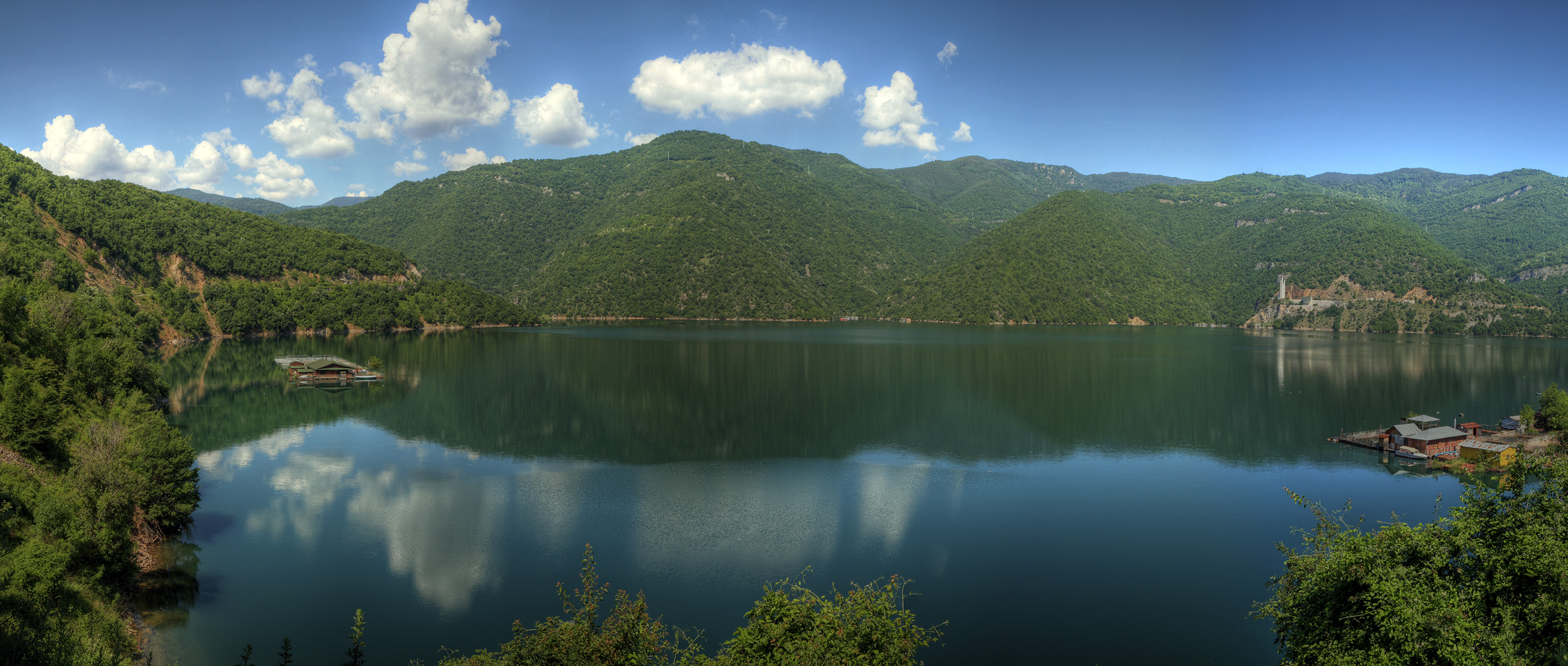|
Kadievo
Kadievo () is a village in Southern Bulgaria, located in Rodopi Municipality, Plovdiv Province. As of 2020 the village has a population of 1057 people. Geography Kadievo is close to the second largest river, streaming from the Rhodope Mountains, Rodope Mountain, Vacha (river), Vacha river. The river is known for its clear waters as it does not pass near any productive facilities. The village is located 6 kilometers away from Plovdiv. The railway line from Plovdiv to Sofia passes through the village. Infrastructure The village has a school and a medical facility cabinet has been opened in 2021 in the school, that the local people can attend. There are children 58 active students in the school as of 2021. There is a vineyard and a wine production facility near the area of the village, on the road to Plovdiv, where some of the people work. The wine cellars are often visited by tourists during the Summer months. Ethnic division As of 2011, the ethnic composition in the village ... [...More Info...] [...Related Items...] OR: [Wikipedia] [Google] [Baidu] |
Bulgaria
Bulgaria (; bg, България, Bǎlgariya), officially the Republic of Bulgaria,, ) is a country in Southeast Europe. It is situated on the eastern flank of the Balkans, and is bordered by Romania to the north, Serbia and North Macedonia to the west, Greece and Turkey to the south, and the Black Sea to the east. Bulgaria covers a territory of , and is the sixteenth-largest country in Europe. Sofia is the nation's capital and largest city; other major cities are Plovdiv, Varna and Burgas. One of the earliest societies in the lands of modern-day Bulgaria was the Neolithic Karanovo culture, which dates back to 6,500 BC. In the 6th to 3rd century BC the region was a battleground for ancient Thracians, Persians, Celts and Macedonians; stability came when the Roman Empire conquered the region in AD 45. After the Roman state splintered, tribal invasions in the region resumed. Around the 6th century, these territories were settled by the early Slavs. The Bulg ... [...More Info...] [...Related Items...] OR: [Wikipedia] [Google] [Baidu] |
Plovdiv Province
Plovdiv Province ( bg, Област Пловдив: ''Oblast Plovdiv'', former name okrug, Plovdiv okrug) is a provinces of Bulgaria, province in central southern Bulgaria. It comprises 18 municipalities (общини, ''obshtini'', sing. общинa, ''obshtina'') on a territory of Bulgarian Provinces area and population 1999 — National Center for Regional Development — page 90-91 with a population, as of February 2011, of 683,027 inhabitants. The province is named after its administrative and industrial centre — the city of Plovdiv. Geography Plovdiv Province includes parts of the Upper Thracian Plain, the Rhodopes, Sred ...[...More Info...] [...Related Items...] OR: [Wikipedia] [Google] [Baidu] |
Southern Bulgaria
Southern Bulgaria ( bg, Южна България, ''Yuzhna Balgariya'') is the southern half of the territory of Bulgaria, located to the south of the main ridge of the Balkan Mountains which conventionally separates the country into a northern and a southern part. Besides the Balkan Mountains, Southern Bulgaria borders Serbia to the west, North Macedonia to the southwest, Greece to the south, Turkey to the southeast and the Bulgarian Black Sea Coast to the east. Geographically, the terrain in Southern Bulgaria is much more varied than that of the north, with the Upper Thracian Plain stretching in the east, while the south and west are dominated by some of Bulgaria's highest mountains such as Rila, Pirin and the Rhodopes, as well as smaller and/or lower mountains and valleys in the west, such as Vitosha, Belasitsa, Osogovo, the Sofia Valley, the Sub-Balkan valleys and the Kraishte region. Southern Bulgaria covers an area of 62,414 square kilometres and has a population of 5,085,8 ... [...More Info...] [...Related Items...] OR: [Wikipedia] [Google] [Baidu] |
Rhodope Mountains
The Rhodopes (; bg, Родопи, ; el, Ροδόπη, ''Rodopi''; tr, Rodoplar) are a mountain range in Southeastern Europe, and the largest by area in Bulgaria, with over 83% of its area in the southern part of the country and the remainder in Greece. Golyam Perelik is its highest peak at . The mountain range gives its name to the terrestrial ecoregion Rodope montane mixed forests that belongs in the temperate broadleaf and mixed forests biome and the Palearctic realm. The region is particularly notable for its karst areas with their deep river gorges, large caves and specific sculptured forms, such as the Trigrad Gorge. A significant part of Bulgaria's hydropower resources are located in the western areas of the range. There are a number of hydro-cascades and dams used for electricity production, irrigation, and as tourist destinations. In Greece, there are also the hydroelectric power plants of Thisavros and Platanovrysi. The Rhodopes have a rich cultural heritage includ ... [...More Info...] [...Related Items...] OR: [Wikipedia] [Google] [Baidu] |
Vacha (river)
The Vacha (, ) is a river in south Bulgaria, one of the main right tributaries of the Maritsa. It is 104 km long and is formed by the confluence of the rivers Buynovska (cirillic: Буйновска река), Trigradska (cirillic: триградска река) and a small unnamed river. Background The Vacha passes through Krichim Dam and Vacha Dam that secure drinking water for Plovdiv and its plains. It runs through the Rhodopes The Rhodopes (; bg, Родопи, ; el, Ροδόπη, ''Rodopi''; tr, Rodoplar) are a mountain range in Southeastern Europe, and the largest by area in Bulgaria, with over 83% of its area in the southern part of the country and the remainder ... forming a deep valley where the two dams are located. An important town in the valley is Devin. It is the second largest river that has its source in the Rhodopes after the Arda. The Vacha does not flow close to any industrial enterprises, which is the reason for its clear water. The origin of ... [...More Info...] [...Related Items...] OR: [Wikipedia] [Google] [Baidu] |
Plovdiv
Plovdiv ( bg, Пловдив, ), is the second-largest city in Bulgaria, standing on the banks of the Maritsa river in the historical region of Thrace. It has a population of 346,893 and 675,000 in the greater metropolitan area. Plovdiv is the cultural capital of Bulgaria and was the European Capital of Culture in 2019. It is an important economic, transport, cultural, and educational center. Plovdiv joined the UNESCO Global Network of Learning Cities in 2016. Plovdiv is situated in a fertile region of south-central Bulgaria on the two banks of the Maritsa River. The city has historically developed on seven syenite hills, some of which are high. Because of these hills, Plovdiv is often referred to in Bulgaria as "The City of the Seven Hills". There is evidence of habitation in the area dating back to the 6th millennium BCE, when the first Neolithic settlements were established. The city was subsequently a local Thracian settlement, later being conquered and ruled also by Persia ... [...More Info...] [...Related Items...] OR: [Wikipedia] [Google] [Baidu] |
Sofia
Sofia ( ; bg, София, Sofiya, ) is the Capital city, capital and List of cities and towns in Bulgaria, largest city of Bulgaria. It is situated in the Sofia Valley at the foot of the Vitosha mountain in the western parts of the country. The city is built west of the Iskar (river), Iskar river, and has many mineral springs, such as the Sofia Central Mineral Baths. It has a humid continental climate. Being in the centre of the Balkans, it is midway between the Black Sea and the Adriatic Sea, and closest to the Aegean Sea. Known as Serdica in Late antiquity, Antiquity and Sredets in the Middle Ages, Sofia has been an area of List of oldest continuously inhabited cities, human habitation since at least 7000 BC. The recorded history of the city begins with the attestation of the conquest of Serdica by the Roman Republic in 29 BC from the Celtic settlement of Southeast Europe, Celtic tribe Serdi. During the decline of the Roman Empire, the city was raided by Huns, Visigoths, P ... [...More Info...] [...Related Items...] OR: [Wikipedia] [Google] [Baidu] |
Bulgarians
Bulgarians ( bg, българи, Bǎlgari, ) are a nation and South Slavs, South Slavic ethnic group native to Bulgaria and the rest of Southeast Europe. Etymology Bulgarians derive their ethnonym from the Bulgars. Their name is not completely understood and difficult to trace back earlier than the 4th century AD, but it is possibly derived from the Proto-Turkic word ''*bulģha'' ("to mix", "shake", "stir") and its derivative ''*bulgak'' ("revolt", "disorder"). Alternative etymologies include derivation from a compound of Proto-Turkic (Oghuric languages, Oghuric) ''*bel'' ("five") and ''*gur'' ("arrow" in the sense of "Turkic tribal confederations, tribe"), a proposed division within the Utigurs or Onogurs ("ten tribes"). Citizenship According to the Art.25 (1) of Constitution of Bulgaria, a Bulgarian citizen shall be anyone born to at least one parent holding a Bulgarian citizenship, or born on the territory of the Republic of Bulgaria, should they not be entitled to any oth ... [...More Info...] [...Related Items...] OR: [Wikipedia] [Google] [Baidu] |
Turkish People
The Turkish people, or simply the Turks ( tr, Türkler), are the world's largest Turkic ethnic group; they speak various dialects of the Turkish language and form a majority in Turkey and Northern Cyprus. In addition, centuries-old ethnic Turkish communities still live across other former territories of the Ottoman Empire. Article 66 of the Turkish Constitution defines a "Turk" as: "Anyone who is bound to the Turkish state through the bond of citizenship." While the legal use of the term "Turkish" as it pertains to a citizen of Turkey is different from the term's ethnic definition, the majority of the Turkish population (an estimated 70 to 75 percent) are of Turkish ethnicity. The vast majority of Turks are Muslims and follow the Sunni and Alevi faith. The ethnic Turks can therefore be distinguished by a number of cultural and regional variants, but do not function as separate ethnic groups. In particular, the culture of the Anatolian Turks in Asia Minor has underlied and ... [...More Info...] [...Related Items...] OR: [Wikipedia] [Google] [Baidu] |
Romani People
The Romani (also spelled Romany or Rromani , ), colloquially known as the Roma, are an Indo-Aryan ethnic group, traditionally nomadic itinerants. They live in Europe and Anatolia, and have diaspora populations located worldwide, with significant concentrations in the Americas. In the English language, the Romani people are widely known by the exonym Gypsies (or Gipsies), which is considered pejorative by many Romani people due to its connotations of illegality and irregularity as well as its historical use as a racial slur. For versions (some of which are cognates) of the word in many other languages (e.g., , , it, zingaro, , and ) this perception is either very small or non-existent. At the first World Romani Congress in 1971, its attendees unanimously voted to reject the use of all exonyms for the Romani people, including ''Gypsy'', due to their aforementioned negative and stereotypical connotations. Linguistic and genetic evidence suggests that the Roma origina ... [...More Info...] [...Related Items...] OR: [Wikipedia] [Google] [Baidu] |




